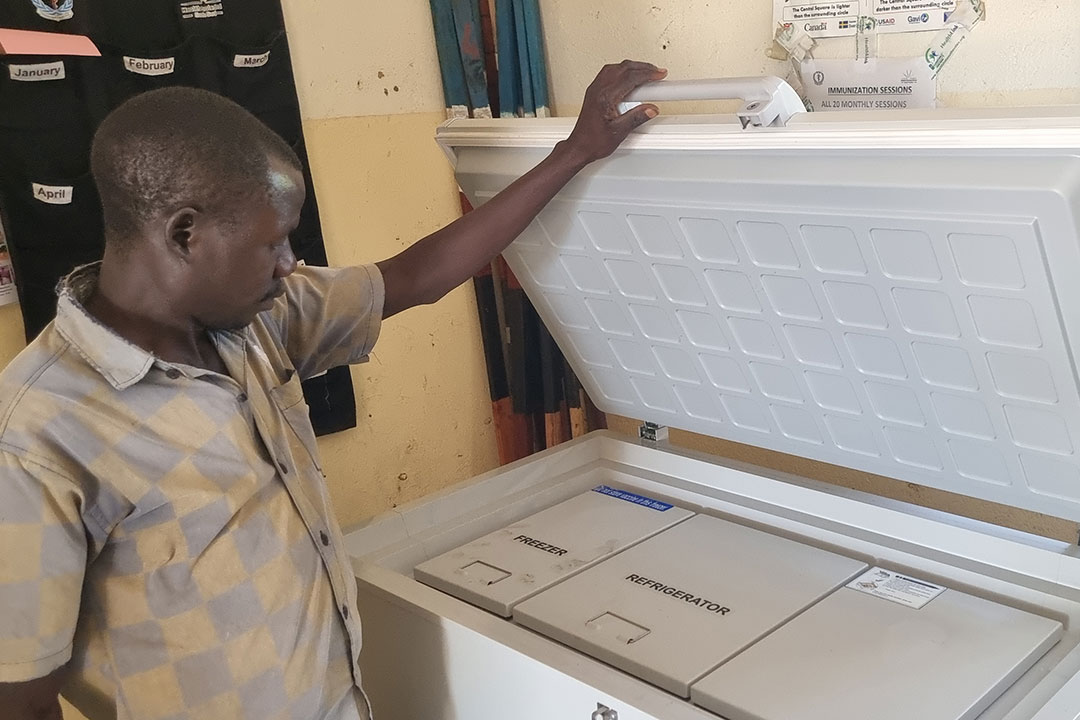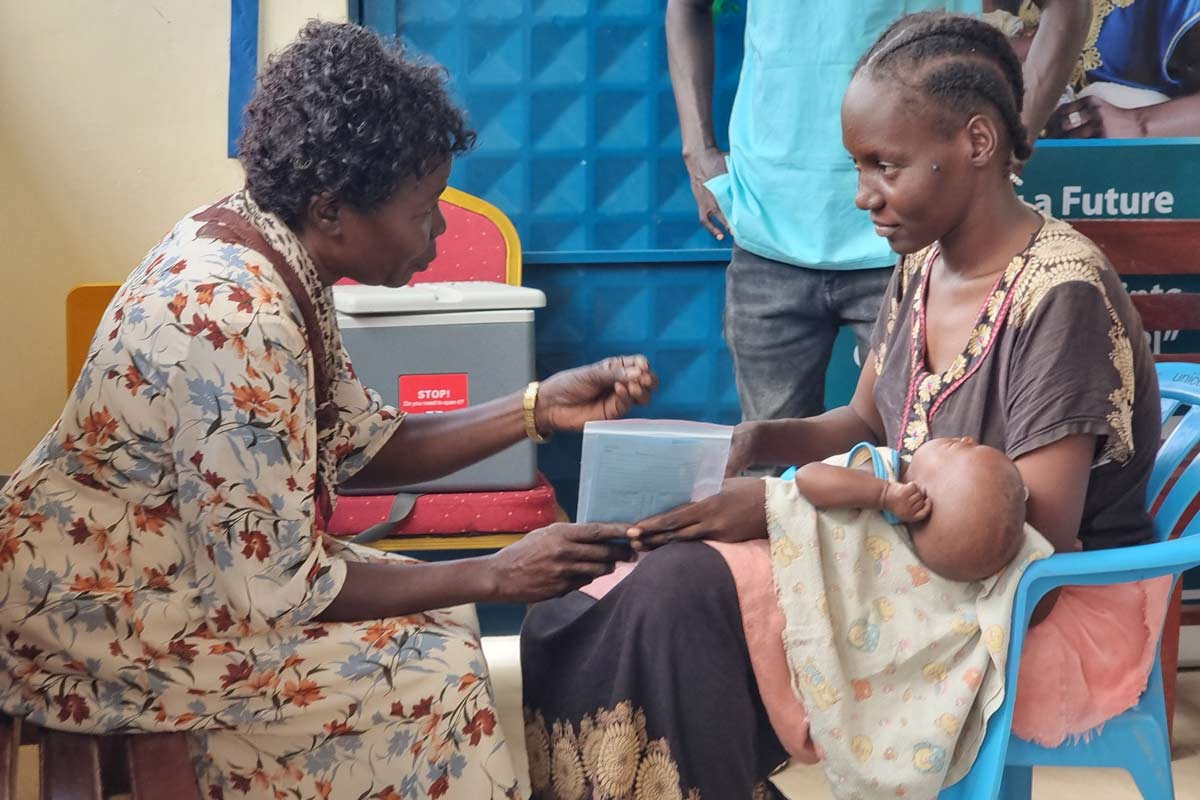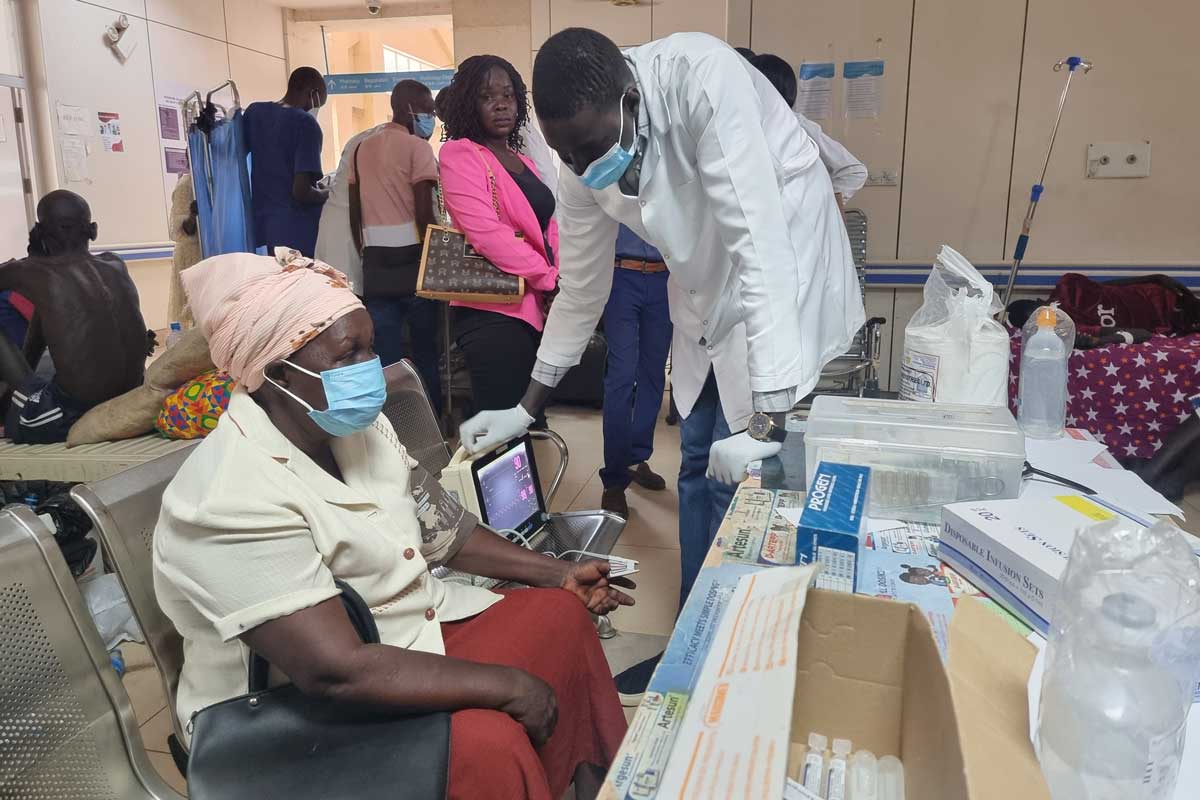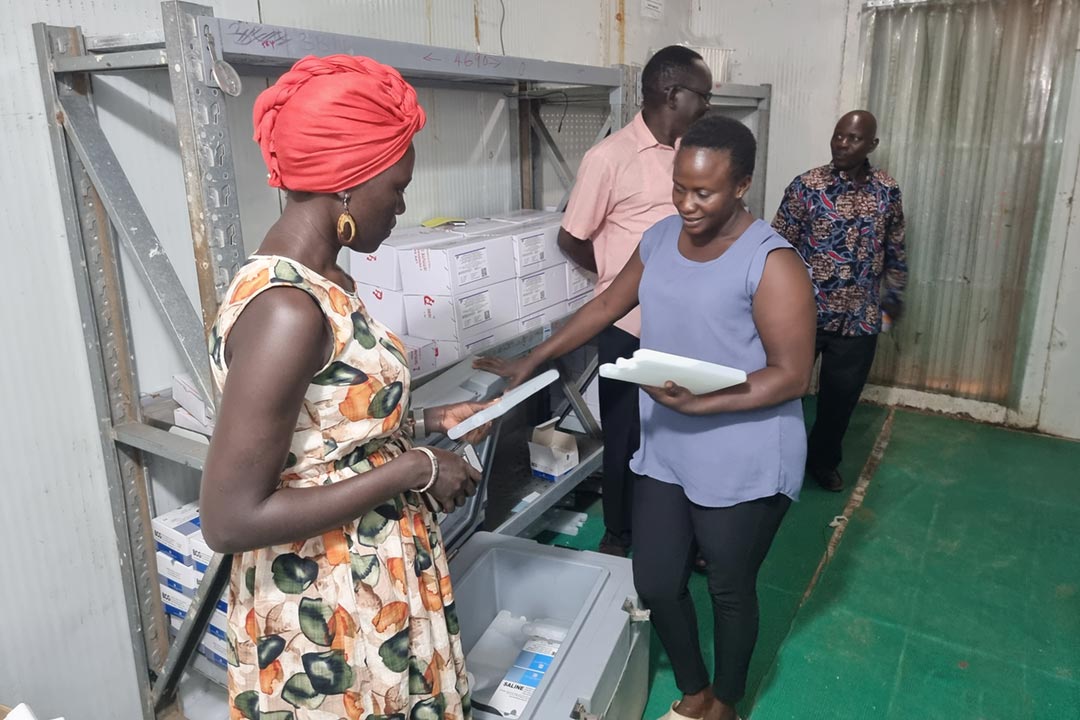South Sudan’s nationwide anti-measles campaign pays off
Awerial County’s vaccine blind spots included cattle camps and a remote lake island, but April’s ambitious mobile outreach efforts have calmed the early year’s spike in cases.
- 12 September 2023
- 5 min read
- by Winnie Cirino

South Sudanese health officials say an alarming surge in cases of deadly, vaccine-preventable measles have tailed off since a nationwide April vaccination campaign, which targeted more than 2.7 million children aged 6–59 months.
"Our coverage in Awerial [County] was 126%, and immediately after two weeks of the campaign, we did not receive many cases," says James Manyiel, County Medical Officer. He means that the campaign's reach outstripped targets as vaccinators venturing to remote communities found more children in need of immunisation than originally modelled. "We still have a few cases, but compared to the time from November to April, the cases were very many, and it was hard to manage them in the facility. However, when vaccination was conducted, the number of cases was reduced."
"We got most of the cases from the cattle camps, and there is no history of children being vaccinated."
– James Manyiel, Awerial County Medical Officer
The campaign came in response to some alarming figures: WHO reported that South Sudan saw 4,000 suspected cases and 46 deaths nationwide between January 2022 and February 2023.
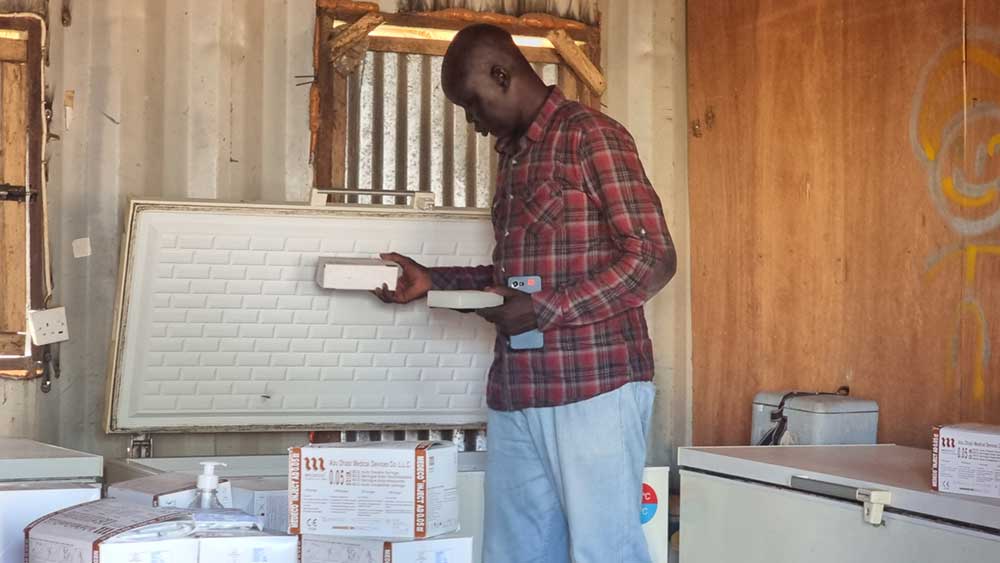
Credit: Winnie Cirino
When Awerial County's suspected measles cases started to rise late last year, about 20 samples were collected and sent to Juba for laboratory investigation. Fifteen of them returned positive, according to Manyiel. He says health officials in the area noticed that the majority of the cases were due to cattle keepers' movement crossing from Central Equatoria and Jonglei states to Awerial.
"We got most of the cases from the cattle camps, and there is no history of children being vaccinated. For cases within the population around here, when we get cases, these are children who were not immunised. When we check their cards, there's no history of measles vaccine recorded."
When the Ministry of Health launched the measles campaign in April, with support from partners including Gavi, the Vaccine Alliance, Manyiel and his team opted for a strategy that was heavy on mobile outreach.
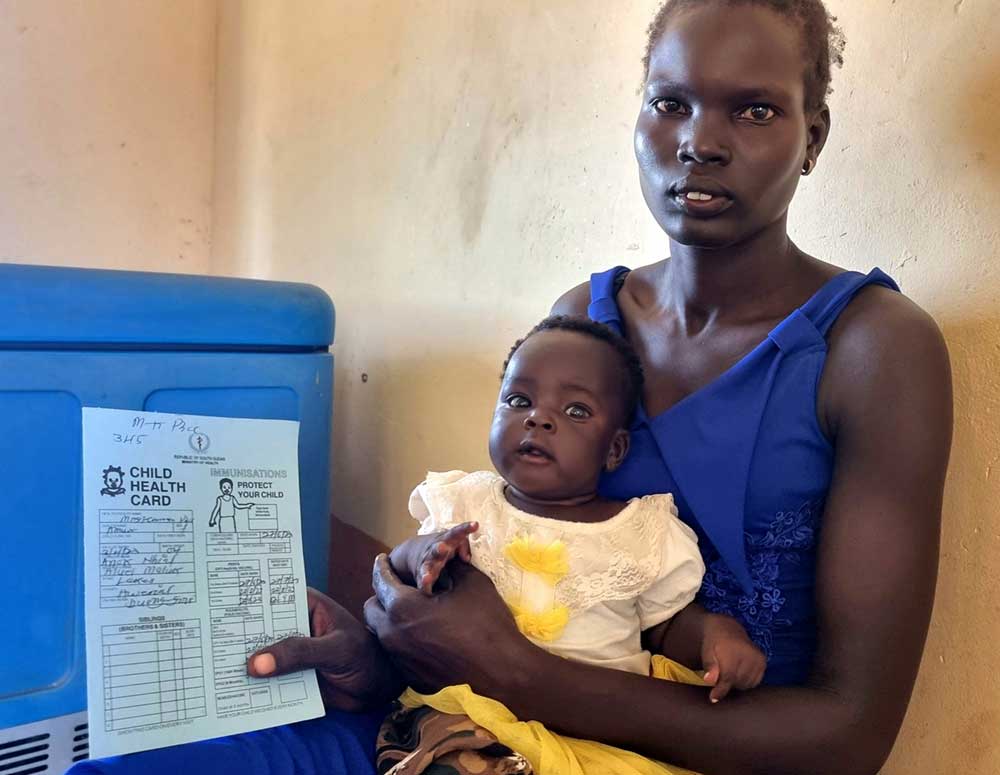
Credit: Winnie Cirino
"We went to the areas where the cattle keepers were staying [between Tali and Awerial]. We sent vaccinators to stay there for two to five days, and they vaccinated all the children around there," Manyiel says, adding that they had first to convince the cattle keepers.
"We went and talked to them, gave them some health education. We made them understand why the disease exists in the community, which means it is the lack of immunisation. Some of these people did not know that cattle movement or population movement is contributing to all this." The world's most contagious human virus, measles can be fatal or permanently disabling. But two doses of the vaccine offer lifelong protection.
Have you read?
Since November, the health facility has recorded two deaths related to measles, but Manyiel acknowledges that there may have been other, unrecorded measles fatalities hidden in the communities. He says he is happy that when the campaign was launched, the local response was enthusiastic.
"Community people were even looking for us to vaccinate their children above nine months because the disease was disturbing them, and they wanted everybody to get the vaccine."
Aluel Maluk, a mother of four, brought her fourth child to Mingkaman PHCC for immunisation. She says she walked from Duanygok with her child for about two hours, a distance of approximately 26km, to come for vaccination.
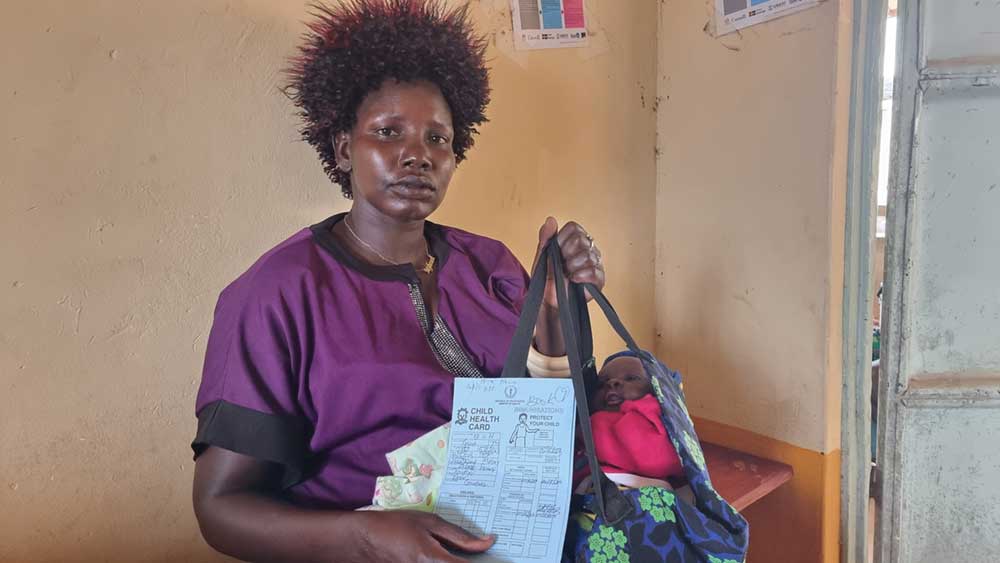
Credit: Winnie Cirino
"Last year, my child was vaccinated from home; I didn't have to walk this long distance or think of getting money to take transport. That encourages us to ensure our children are immunised," Maluk says. "But when vaccinators don't come to the area, I put an effort into taking my child, because I have learned the benefits of the vaccine; besides, it's free of charge."
Abuk (28), a mother of four, says when she was pregnant with her first child, she was told to bring her child for vaccination "often" – and she always obeys advice from health centres.
"When I vaccinated my first child according to advice from the health centre, my daughter remained healthy until today. This made me believe that vaccines work, and that's why I have brought my fourth child for vaccination also."
"When I vaccinated my first child according to advice from the health centre, my daughter remained healthy until today. This made me believe that vaccines work, and that’s why I have brought my fourth child for vaccination also."
– Abuk, mother of four
Mhot Ahoch-Thon is a vaccinator at the Mingkaman PHCC in Awerial. He says vaccinators have been moving within the community, to cattle camps, and also to Wunthok island.
"I went to the island called Wunthok for three days and vaccinated several children. The community leaders and the youth were helpful in organising the lines to ensure order and everyone gets the vaccine," Ahoch-Thon says.
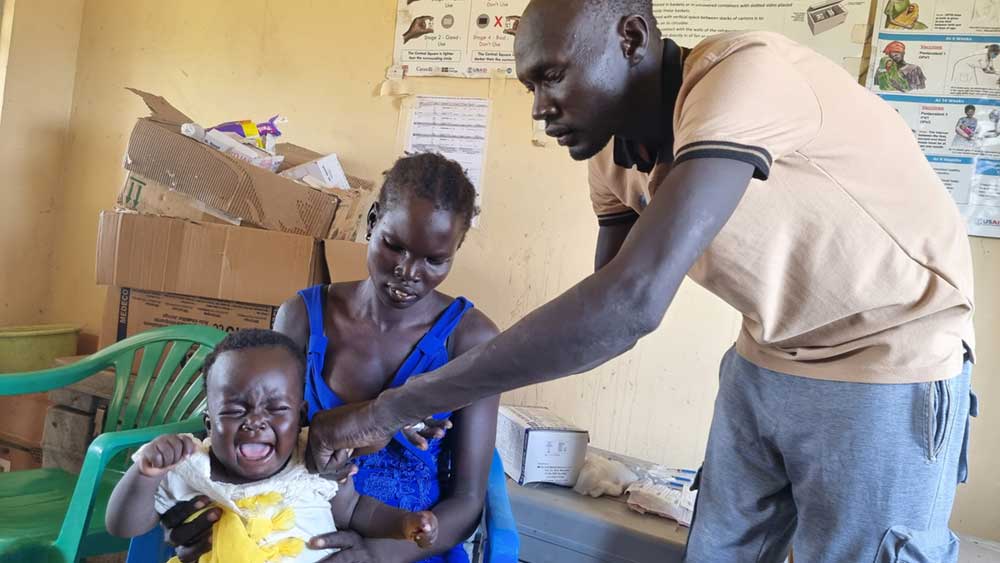
Credit: Winnie Cirino
Awerial health workers had expected to vaccinate 15,000 children during the campaign, but Ahoch-Thon says they exceeded that target. "We vaccinated 17,000 children, because when we reached the island, there were many children there. Also, at the facility, our daily target was 70 children, but some days we even reached more than 200 children."
County Medical Officer Manyiel says the county's biggest challenge is reaching the people along the Nile. A lack of motorboats has made outreach tricky in the riverine zone. He appeals for water transport support. "If there is a good Samaritan who can help us with a motorboat to reach those areas frequently, then those people will easily get vaccines, and this will mitigate the spread of the deadly disease."
